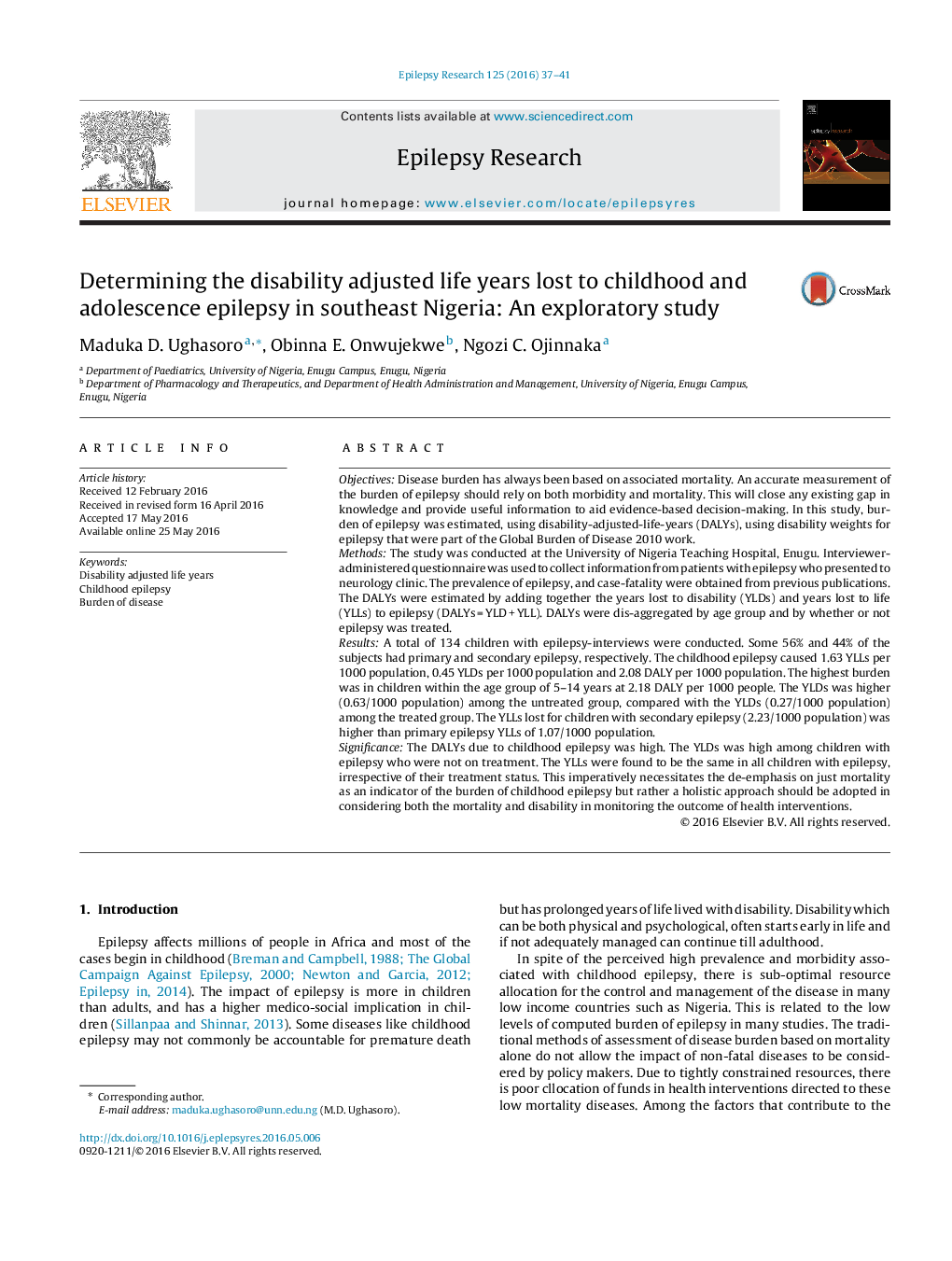| Article ID | Journal | Published Year | Pages | File Type |
|---|---|---|---|---|
| 3051906 | Epilepsy Research | 2016 | 5 Pages |
ObjectivesDisease burden has always been based on associated mortality. An accurate measurement of the burden of epilepsy should rely on both morbidity and mortality. This will close any existing gap in knowledge and provide useful information to aid evidence-based decision-making. In this study, burden of epilepsy was estimated, using disability-adjusted-life-years (DALYs), using disability weights for epilepsy that were part of the Global Burden of Disease 2010 work.MethodsThe study was conducted at the University of Nigeria Teaching Hospital, Enugu. Interviewer-administered questionnaire was used to collect information from patients with epilepsy who presented to neurology clinic. The prevalence of epilepsy, and case-fatality were obtained from previous publications. The DALYs were estimated by adding together the years lost to disability (YLDs) and years lost to life (YLLs) to epilepsy (DALYs = YLD + YLL). DALYs were dis-aggregated by age group and by whether or not epilepsy was treated.ResultsA total of 134 children with epilepsy-interviews were conducted. Some 56% and 44% of the subjects had primary and secondary epilepsy, respectively. The childhood epilepsy caused 1.63 YLLs per 1000 population, 0.45 YLDs per 1000 population and 2.08 DALY per 1000 population. The highest burden was in children within the age group of 5–14 years at 2.18 DALY per 1000 people. The YLDs was higher (0.63/1000 population) among the untreated group, compared with the YLDs (0.27/1000 population) among the treated group. The YLLs lost for children with secondary epilepsy (2.23/1000 population) was higher than primary epilepsy YLLs of 1.07/1000 population.SignificanceThe DALYs due to childhood epilepsy was high. The YLDs was high among children with epilepsy who were not on treatment. The YLLs were found to be the same in all children with epilepsy, irrespective of their treatment status. This imperatively necessitates the de-emphasis on just mortality as an indicator of the burden of childhood epilepsy but rather a holistic approach should be adopted in considering both the mortality and disability in monitoring the outcome of health interventions.
